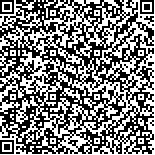| 引用本文: |
唐静, 叶勇, 李里, 唐锦忠, 胡笛, 邬婉蓉, 彭咏梅, 王堃至, 张泓.PNF技术结合筋骨调衡手法对青少年上交叉综合征的疗效观察[J].湖南中医药大学学报,2025,45(1):73-79[点击复制] |
|
| |
|
|
| 本文已被:浏览 1836次 下载 1021次 |
| PNF技术结合筋骨调衡手法对青少年上交叉综合征的疗效观察 |
| 唐静,叶勇,李里,唐锦忠,胡笛,邬婉蓉,彭咏梅,王堃至,张泓 |
| (湖南中医药大学, 湖南 长沙 410208;湖南中医药大学第一附属医院, 湖南 长沙 410007;长沙市中医康复医院, 湖南 长沙 410021;石门县中医医院, 湖南 常德 415399) |
| 摘要: |
| 目的 观察本体感觉神经肌肉易化技术(PNF)结合筋骨调衡手法治疗青少年上交叉综合征(UCS)的临床疗效。方法 采用多中心、大样本随机对照试验方法,将2022年7月至2023年9月在湖南省3家中医院纳入的青少年UCS患者180例,随机分为观察组和对照组,每组90例,研究阶段观察组退出2例、对照组退出3例。观察组给予PNF技术结合筋骨调衡手法,对照组采用PNF技术,两组患者均治疗4周(1个疗程),治疗结束后3个月及6个月随访复发率。治疗前后对两组患者上斜方肌及胸大肌表面肌电指标均方根值(RMS)、中位频率(MF)、头前伸角度(FHA)、圆肩角度(FSA)、颈椎活动范围进行评价,治疗后比较总有效率、复发率。结果 治疗后,两组患者RMS较治疗前降低、MF较治疗前增高(P<0.05),且观察组的RMS低于对照组、MF高于对照组(P<0.05);治疗后,两组患者的FHA、FSA均较治疗前降低(P<0.05),且观察组的FHA、FSA均低于对照组(P<0.05);治疗后,两组患者的颈椎活动范围均较治疗前增加(P<0.05),且观察组颈椎活动范围均优于对照组(P<0.05);观察组总有效率优于对照组(P<0.05);观察组治疗后3、6个月的复发率均低于对照组(P<0.05)。结论 PNF结合筋骨调衡手法可有效缓解肌肉疲劳,改善颈肩部肌肉失衡状态,增加颈椎活动范围,对青少年UCS体态改变疗效显著,值得临床推广运用。 |
| 关键词: 上交叉综合征 筋骨调衡 本体感觉神经肌肉易化技术 表面肌电 颈椎活动范围 |
| DOI:10.3969/j.issn.1674-070X.2025.01.010 |
| 投稿时间:2024-09-05 |
| 基金项目:湖南省卫生健康委员会科研重点项目(C202302088588)。 |
|
| Efficacy observation of PNF combined with muscle and bone balancing technique for the treatment of upper cross syndrome in adolescents |
| TANG Jing, YE Yong, LI Li, TANG Jinzhong, HU Di, WU Wanrong, PENG Yongmei, WANG Kunzhi, ZHANG Hong |
| (Hunan University of Chinese Medicine, Changsha, Hunan 410208, China;The First Hospital of Hunan University of Chinese Medicine, Changsha, Hunan 410007, China;Changsha Chinese Medicine Rehabilitation Hospital, Changsha, Hunan 410021, China;Shimen Hospital of TCM, Changde, Hunan 415399, China) |
| Abstract: |
| Objective To observe the clinical efficacy of proprioceptive neuromuscular facilitation(PNF) combined with muscle and bone balancing technique in the treatment of upper cross syndrome(UCS) in adolescents. Methods The study employed a multi-center, large-sample randomized controlled trial method. A total of 180 adolescent UCS patients were enrolled from three Chinese medicine hospitals in Hunan Province from July 2022 to September 2023. They were randomly divided into observation group and control group, with 90 cases in each group. During the study phase, two cases dropped out from the observation group and three cases dropped out from the control group. The observation group received PNF technology combined with bone and muscle balancing technique, while the control group only received PNF. Both groups were treated for four weeks(one course of treatment), and the recurrence rate was followed up at three months and six months after the end of treatment. The root mean square(RMS), median frequency(MF), forward head angle(FHA), rounded shoulder angle(FSA), and cervical spine range of motion on the surface electromyographic indicators of the upper trapezius and pectoralis major muscles in two groups of patients before and after treatment were measured. The total effective rate and recurrence rate after treatment were compared. Results After treatment, the RMS of both groups of patients decreased and the MF increased compared to that before treatment(P<0.05). Additionally,the RMS of the observation group was lower than that of the control group, and the MF was higher than that of the control group(P<0.05), and the FHA and FSA of both groups of patients decreased(P<0.05), and the FHA and FSA of the observation group were lower than those of the control group(P<0.05). The range of cervical spine activity of both groups of patients increased after treatment(P<0.05), and the range of cervical spine activity of the observation group was better than that of the control group(P<0.05).The total effective rate of the observation group was better than that of the control group(P<0.05), and the recurrence rates of the observation group at three and six months after treatment were lower than those of the control group(P<0.05). Conclusion The combination of PNF and muscle and bone balance adjustment technique can effectively relieve muscle fatigue, alleviate the imbalance of neck and shoulder muscles, increase the cervical spine range of motion, and significantly improve the therapeutic effect of posture changes in adolescents with UCS. It is worth promoting and applying clinically. |
| Key words: upper cross syndrome muscle and bone balancing proprioceptive neuromuscular facilitation surface electromyography cervical spine range of motion |
|

二维码(扫一下试试看!) |
|
|
|
|




